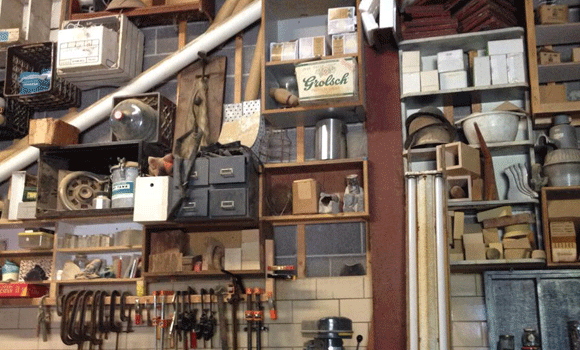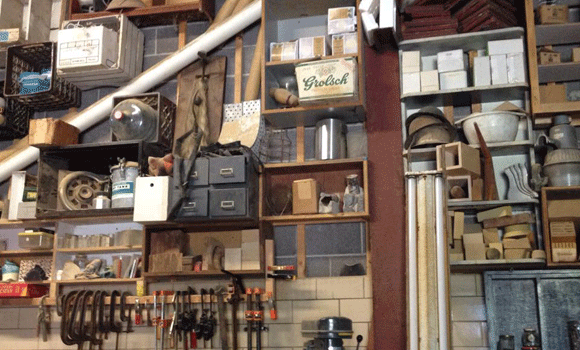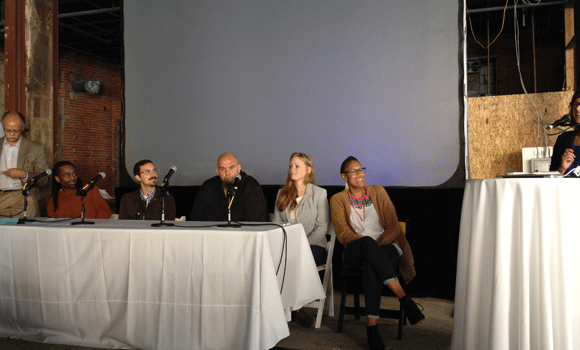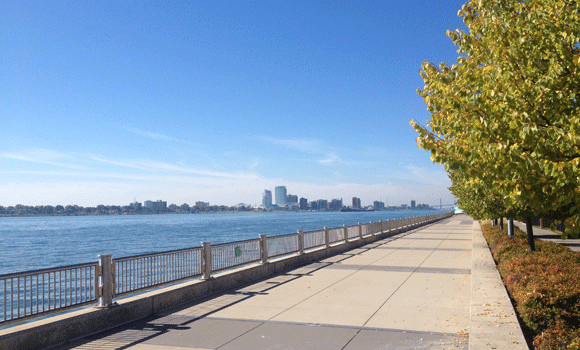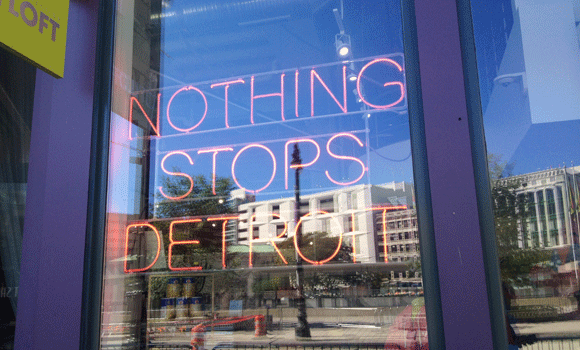I moved to Pittsburgh from a city with hype to spare. I am talking about New York — lauded in songs and on shopping bags, t-shirts, movies and assorted souvenirs made in China. I’ve attended concerts in other countries where the performer asks: “Is Brooklyn in the house,” and the answer is always, invariably: “Yes.”
In Pittsburgh, people are not always so loud and proud. Yes, we love the Steelers and the Penguins and our bridges, but we don’t fill songs with accolades about the three rivers or the sunrise over Point State Park. In fact, according to an article in City Paper, “In songs where Pittsburgh features more prominently, it's often as a backdrop to human despair and misery.”
Of course, as those of us who live here know that isn’t an accurate reflection of this amazing city.
But why is this gem hidden? Who hides it?
Before attending the Urban Innovation Exchange in Detroit, I thought Pittsburgh’s image problem was unique. I didn’t realize the entire Rust Belt allows itself to be defined by its legacy of hardworking humility and whatever visiting reporters decide to write about it.
Detroit might have received the worst press of all. Based on what I had read, I expected Detroit to be a war zone without drinking water, where even my old crappy car would be stolen. I expected the city streets to be empty or filled with misery, and I don’t live far away — Detroit is a five-hour drive from Pittsburgh.
Instead, I saw traffic surrounding the construction of a light rail and was treated to numerous presentations showcasing the innovative work being done to rebuild the city. At the Museum of Contemporary Art Detroit and at the city’s art and light festival, DLECTRICITY, I had the chance to see some of the most amazing (and affordable) art I’ve seen in years.
Many presenters at the conference hailed from Rust Belt cities, including Cincinnati, Detroit and Cleveland, with some Midwestern flavor from Minneapolis thrown in. Representing the Pittsburgh region were Eve Picker of CityLAB, Bobby Fry of Bar Marco and the Food Revolution Cooking Club, Braddock Mayor John Fetterman and Sara Blumenstein of the Pittsburgh Canning Exchange. Picker’s “follow the money” stump speech on the obvious financial benefits of investing in small projects and Blumenstein’s correlating explanation of Pittsburgh’s burgeoning tiny house movement were both fascinating.
Industrial roots
In researching this Rust Belt humility, I learned that Cleveland is affectionately known as “the mistake on the lake,” while Detroit is often the butt of jokes including: “Why do ducks fly upside down over Detroit? There is nothing worth crapping on.”
During his speech at UIX, Fetterman said a Google search of the Pittsburgh Post-Gazette archive from 2006 revealed similarly negative attitudes about his borough, portraying it as a place one wanted to avoid.
On his arms, the mayor bares tattoos commemorating the dates when people were killed in his community. But, “chaos is not a pit, it is a ladder,” he said, explaining what he had done to turn things around. Braddock now has a community center, apartments that will serve as live-work space for artists and makers, and a reduced crime rate.
However, re-branding Braddock wasn’t something that was explicitly on the mayor’s agenda. Fetterman said he isn't too keen on publicity, explaining that he's not on Twitter and didn’t want to “sugarcoat things” or misrepresent the borough. “You can’t put rainbows and unicorns on Braddock, he insisted.
He spoke of cheesy Chamber of Commerce-style efforts to attract visitors to cities as both ineffective and embarrassing. These campaigns try desperately to appeal to travelers or families and are not aspirational. They may even accidentally de-value the location they attempt to promote by seeming to pander — like when they attempt to define a Rust Belt city in relation to other places, i.e. the Paris of the Midwest or the new Brooklyn.
Innovation over emulation
The Rust Belt will never be Manhattan, and that’s a good thing. Living in Pittsburgh, I don’t miss New York City traffic, crowds or the constant anxiety that stems from being unable to earn enough to get by. Perhaps we don’t tell people how amazing the Rust Belt is because we don’t want it overrun with people making it too expensive to afford. Maybe we like our time and space — and relish the chip-on-the-shoulder that comes with being undervalued — or maybe we just don’t know what we’ve got.
In a satirical Huffington Post article, humorist Daryl Rowland writes that Cleveland will never be the new Brooklyn because its hipsters are too sincere.
“Sadly, they love and respect their friends and families, they mean what they say, and worst of all, when they upcycle trashed items like machinery, furniture or clothing, it's actually because they live frugally — not to slyly comment on their wealthy parents' extravagance.” he muses. “In short, they lack basic irony.”
What Rowland is essentially saying (using the irony he claims Cleveland lacks) is that Rust Belt cities won’t be “the new Brooklyn” because they are the real deal.
Stores like Pittsburgh’s Construction Junction, founded in 1999 to sell used building materials and appliances, thrive in part due to the abundance of demolition in our region. In Detroit, we visited a bar with a re-used floor that came from an abandoned school gym, not just because it was cool, but because of the region's wealth of architectural salvage.
At UIX, we had a chance to catch up with Blumenstein of the Pittsburgh Canning Exchange. She uses Mason jars the way God intended.
“Canning is a great way to be able to eat locally year round,” said the Michigan native.
Historically, people canned food so that they would have things to eat in the winter. They would hold canning exchanges to be enable variety in their diet — someone who canned many tomatoes could trade with someone who canned carrots. Canning is one of those things that saves money but takes time: a perfect Rust Belt activity and completely en-vogue.
In celebrating the Rust Belt, it's essential to view it with fresh eyes. To explore the hidden assets in our supposed weaknesses and see these cities not as what New York or Los Angeles tell us cities should be, but as what we believe and hope cities will become.
There’s a sense in Cincinnati
While the Rust Belt may not officially be paradise, it has something profound to offer that doesn’t rely on illusion. Matt Anthony spoke at UIX on behalf of First Batch, an Ohio organization that connects small-scale manufacturers with producers.
“There’s a sense in Cincinnati that you can make it happen, and I think there’s that sense in this region,” he said. “You hear a lot of people say ‘I went to New York, but then I came back because I wanted to do something.’”
Blumenstein sees similar potential.
“Given the history of both Pittsburgh and Detroit around loss…that makes people a little more excited to support each other,” she explained.
Fry used the story of the Andy Warhol Museum to illustrate that point.
“When Andy Warhol died, his family tried to shop around the idea of a museum, and other cities were like 'ehhh,'” he recalled. “Pittsburghers were so excited and built up this amazing institution.”
In Pittsburgh, if you build it they will come. “But, if you don’t get involved in Pittsburgh right now, you are going to miss the wave,” he added. “Come while you can still swim.”
In Detroit, people are rebuilding the city in new and creative ways, co-working at spaces like Ponyride for pennies per square foot and creating self-sustaining aquaponic farms so that they don’t fall victim again to the economic system that crushed them before. The very thing the Rust Belt has to offer comes from the decay that is so often decried. Where Rust Belt natives see decline, big-city ex-pats see possibility.
I spent much of my downtime at the conference hanging out with Emily Busch, an adventurous 30-year-old Californian who, though unemployed, came to UIX because she felt compelled.
“I came just to see what’s out there,” said Busch.
We had both seen the documentary Detropia, which details Detroit’s decline and its thriving arts scene, and were moved by it.
“There is a lot of energy in Detroit,” muses Busch. “I feel like it’s a promised land in our mind. It just feels freer and more possible.”
On a factory tour of McClure's Pickles, we learned that the McClure brothers started their company in 2006 using a family recipe, a loan from their parents and some hope.
“There is physical space and temporal space to explore other ways of being and doing,” said Busch, who grew up in Los Angeles and lives in San Francisco, the city with the highest rent in the United States.
After returning to California, Busch reflected on Detroit’s appeal, which is both distinctive and characteristic of Rust Belt cities.
“The idea of space immeasurable, $50 dollar real estate deals, urban gardens by the block, artist entrepreneur enclaves and lax regulation was juxtaposed with my current reality in the bubblicious Bay Area, characterized by a space implosion, urban garden space morphing into luxury condo developments, and a saturation of tech companies creating virtual products of questionable intrinsic or societal value,” she explained. “Detroit, in my mind, was the new frontier.”
A similar slow, steady and artful re-building has been happening for years in Pittsburgh. The population here is getting younger, and there are more people walking the streets today than five years ago.
“I think we are approaching a problem we were looking to have for a long time,” said Fry In an interview after his UIX speech, referring to Pittsburgh’s recent growth. “The best time to buy real estate in Pittsburgh is always two years ago.”
The Rust Belt has a long way to go, but we have also come a long way. Maybe it’s hard to see the promise amid the chaos if you have always lived here, and maybe it’s hard to believe that anyone would want to leave a comfortable hyper-urban lifestyle to relocate, but I’m here to tell you, New York City and San Francisco are coming for you.
Musician Patti Smith, who got her start in New York City, told young artists thinking of moving to the city to fughettaboutit. “New York has closed itself off to the young and struggling,” said Smith in 2010. “New York City has been taken away from you … So my advice is: Find a new city.”
She suggested Detroit.
With an abundance of time, space and support, Rust Belt cities should be on the lists of young people looking to start new projects. In Pittsburgh, our “thing” is a certain type of everyone-knows-your-name congeniality that magically takes place in a big city. If you have an idea or want to accomplish things in Pittsburgh, people will help you find money and greet you with enthusiasm.
Developers are building at an increasingly fast pace in Pittsburgh, seeing promise in our region. The question is, do Rust Belt cities have enough pride to make an offer that can be refused? Do we know our own worth?
ELIZABETH DALEY is a New York City native and freelance writer who relocated to Pittsburgh in search of a better life. Her work has appeared in USA Today, The Christian Science Monitor, Reuters and numerous San Francisco Bay Area publications. She is the innovation editor of Pop City. Follow her on twitter @fakepretty.
